Exploring Avian Behavior: Insights into Bird Life
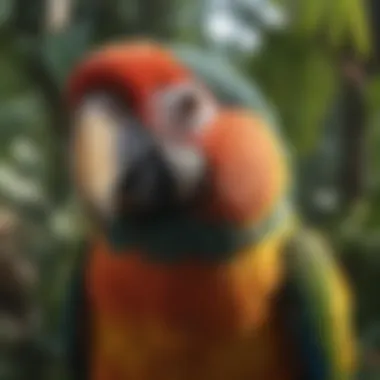
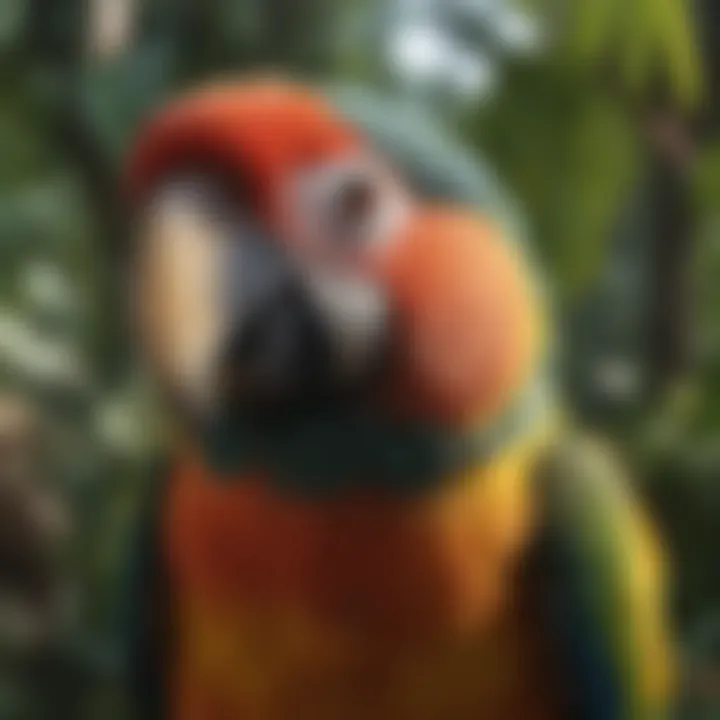
Intro
Birds are more than just creatures fluttering in the sky; they are complex beings with intricate behaviours that demand our attention. The way these avian denizens navigate their world can tell us much about their social structures, mating habits, and even how they interact with their environment. Understanding these behaviours isn’t merely for ornithologists; it’s crucial for pet owners and enthusiasts too. To truly connect with our feathered friends, we must delve into the factors that shape their actions.
"Birds are not just creatures of instinct; they are thinkers, feeling beings capable of forming deep social bonds."
In this article, we shall unfold layers of avian behaviour that extend beyond what most might consider a simple chirp or flight. We will explore their social interactions, mating rituals, and feeding habits while examining how the environment plays an essential role in their behaviour. The insights gained will enhance your connection with pet birds, fulfilling both their needs and yours, promoting responsible practices in birdkeeping.
Understanding Your Pet
To begin with, grasping the essence of your pet bird’s behaviour is key. Recognizing the species-specific traits not only aids in creating a harmonious living environment but also helps in catering to their distinct needs.
Pet Behavior Basics
Birds can display a variety of behaviours that can often be perplexing. From their vocalizations to their body language, each action can hold significance. Birds often showcase curiosity, a trait that can lead to the creation of robust relationships between bird and owner. By observing their habits, such as preening or hanging upside down, one can better understand their comfort levels and emotional states.
Common Breed Characteristics
Different species of birds exhibit unique traits. For example, cockatiels are known for their affectionate nature and playful antics, often engaging in mimicry. Budgerigars, on the other hand, are slightly more reserved but thrive on companionship. Having awareness of these characteristics is essential when forging a bond with your pet.
Species-Specific Needs
Not all birds require the same care. Parrots, small and vibrant, thrive on social interaction, whereas finches may prefer a more solitary existence. Consider the adjustments necessary based on their habits—but always keep their species in mind. Environment, diet, and companionship can vary significantly from one bird to another, making knowledge critical.
Pet Care and Maintenance
Beyond understanding behaviours, attentive care and proper maintenance are crucial for the health of your pet bird.
Feeding Guidelines
Birds need a balanced diet rich in variety. Pellets should form the core of their diet, supplemented by fresh fruits and veggies. However, certain foods like avocado can be toxic. Always do your homework on what’s safe and nutritious.
Grooming Essentials
Birds groom themselves but can benefit from their owners’ assistance. Regular nail trimming is necessary to prevent overgrowth. You might also consider occasional baths—some birds love splashing around in water, while others might just enjoy a fine mist from a spray bottle.
Hygiene Practices
Keeping your bird's environment clean is paramount. Daily fresh water changes and regular cleaning of the cage are essential. Improper hygiene can lead to health issues and discomfort, and let’s be honest, no one enjoys living in a mess!
Training and Development
While it’s natural for some birds to have a feisty personality, training provides an essential framework for their development.
Basic Commands and Skills
Starting them off with simple commands can strengthen your bond. “Step up” or “down” are fundamental commands for safe handling. Using positive reinforcement can work wonders in encouraging desired behaviours.
Behavioral Training Techniques
Consistency is the name of the game. Employing techniques such as click training—or simply positive reinforcement with treats—can effectively shape behaviour. However, one must be patient; it might take time for your avian companion to grasp new commands.
Addressing Common Behavior Issues
Sometimes, birds can exhibit unwanted behaviours, from excessive squawking to feather picking. Understanding the root cause is vital. Environmental factors, stress, or boredom could be at play. Always observe changes closely, and adjust their environment or routine accordingly.
Health and Wellness
Birds are delicate creatures, often masking illness until it becomes critical. Regular health checks and awareness of their ailing signs can make all the difference.
Routine Vet Check-ups
Just like any pet, birds require veterinary care. Annual check-ups can help catch potential issues early on. Establish a relationship with an avian vet who understands the specific needs of birds, providing peace of mind for your pet’s health.
Vaccination Needs
Vaccines specific to your bird's species can protect them from common diseases. Research and consult with your vet about necessary vaccinations tailored for your feathered friend.
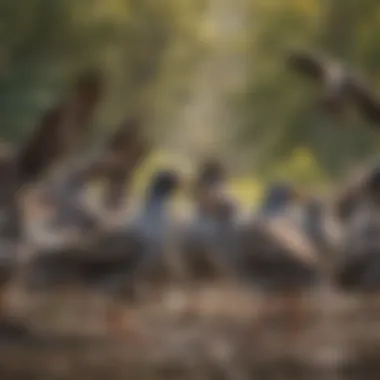
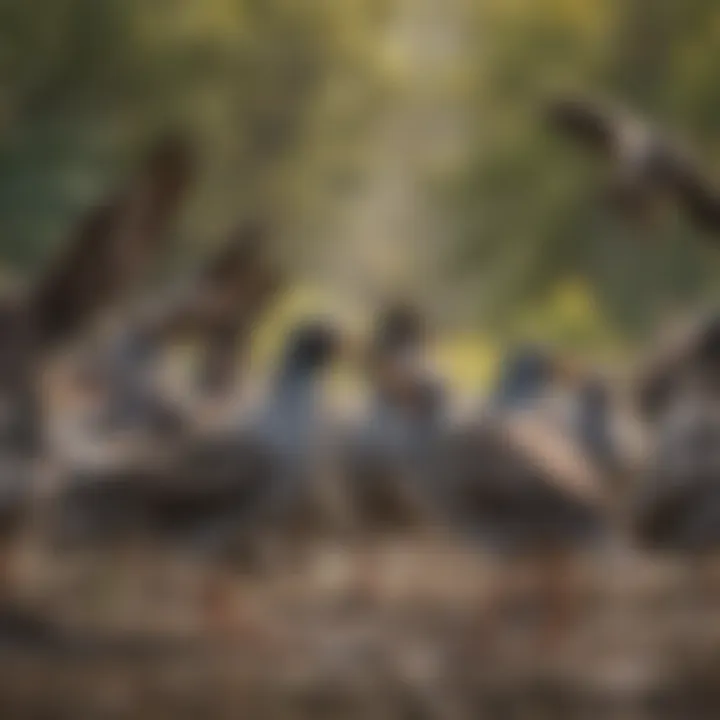
Recognizing Signs of Illness
Dull feathers, changes in appetite, or unusual behaviours can signal trouble. It's crucial to recognize these signs early. A proactive approach will always yield greater outcomes for health.
Enrichment and Activities
Keeping birds entertained is key to their overall well-being. Boredom can lead to destructive behaviours, so providing ample enrichment is priceless.
Indoor vs. Outdoor Activities
Indoor playtime can be made engaging with safe toys, while outdoor excursions should always be supervised. Birds benefit from the fresh air, but remember to protect them from potential dangers like predators.
Interactive Toys and Games
Think outside the box when it comes to toys—those that require puzzle-solving or even simple foraging will keep them mentally stimulated. Rotating toys regularly can also sustain their interest.
Socialization Opportunities
Birds are social creatures. Engage them with various interactions, whether through playdates with other birds or simple family interactions. Building social skills helps avert behavioural issues, paving the way for a happy, well-adjusted pet.
Prologue to Avian Behavior
Bird behavior is a fascinating topic that opens the door to understanding not just birds, but the ecosystems they inhabit. Grasping the nuances of how birds interact with each other, their environment, and even humans lays a foundation for a more profound appreciation of these winged creatures. This exploration is important for pet owners, animal lovers, and families alike, as it enriches the relationship we have with birds in our lives.
Being privy to the subtleties of avian behavior offers several benefits. Understanding birds can lead to more compassionate and informed pet ownership. For instance, recognizing signs of stress or contentment in a pet bird can dramatically enhance its welfare. Furthermore, a deeper knowledge of birds assists in appreciating their place in ecosystems, which is vital for conservation efforts in an increasingly urbanized world.
There are considerations as well. Bird behavior can vary considerably across species, and misconstruing these behaviors can lead to misunderstandings. For example, a parrot may vocalize for attention, while a finch may do so as part of its mating ritual. Knowledge of such differences is crucial not only for the well-being of pet birds but also for fostering understanding in the context of wild populations. In sum, venturing into the world of avian behavior equips us with insights that are beneficial on multiple levels—from personal gratification to ecological awareness.
The Importance of Studying Bird Behavior
Studying bird behavior allows us to appreciate the complexities of avian life. Each species exhibits behaviors that have evolved over time, intricately tied to their environment. For instance, the migratory patterns of the Arctic Tern reveal not just the instinctual drives of the species but also underline the impacts of climate change. Knowledge about such behaviors can provide a more holistic insight into the ecological webs they inhabit.
Understanding birds provides a unique lens to observe the health of our environment.
Moreover, for those keen on keeping birds as pets, capturing the essence of their instinctual behaviors is essential. Pet owners can better replicate an appropriate habitat, ensuring that their birds remain mentally stimulated and healthy. It's commonly observed that birds can develop unique personalities, influenced by their surroundings and experiences. The softer side of bird behavior showcases a world that is both intricate and enchanting.
An Overview of Avian Species
The bird kingdom is a diverse tapestry woven of various species, each sporting distinct traits and behaviors. From the elegance of eagles soaring through the skies to the bright, chatty nature of parakeets, the variety is simply breath-taking.
- Raptors like hawks and owls are skilled hunters, using acute vision and swift flight to catch their prey.
- Songbirds or passerines form a substantial group in which vocal communication plays a critical role in mating and territorial disputes.
- Waterfowl, such as ducks and geese, exhibit strong social structures, often seen traveling in flocks with defined hierarchies.
- Exotic species like the cockatoo captivate both enthusiasts and casual observers alike, often boasting unique vocalizations and vibrant plumage.
Recognizing the richness of avian diversity enriches our connection to these creatures and fosters love and respect for them. Understanding bird behavior across different species can nourish responsible birdkeeping practices, inviting a greater discourse on habitat conservation and ethical wildlife interactions.
Social Structures Among Birds
Social structures among birds are fascinating and complex, revealing much about how these creatures survive and thrive in their environments. Understanding these social dynamics is key for pet owners and bird enthusiasts alike, as they provide insights into the behavior and needs of different avian species. Social structures can influence everything from foraging behaviors to mating practices, showcasing the intricate interplay of individual and group dynamics.
Flock Dynamics and Hierarchies
Flocking is a common behavior in many bird species, providing numerous benefits such as increased protection from predators and improved foraging efficiency. When birds come together in flocks, they create social hierarchies that can influence behavior within the group. For instance, dominant birds often have first access to food resources and prime nesting spots while lower-ranking birds may have to navigate a more complex dynamic to secure their needs.
In a flock, you might notice that certain individuals exhibit more assertive behaviors, establishing themselves as leaders. These leaders often guide the flock during foraging and migration, meaning their decisions can impact the entire group. Understanding these dynamics can help pet owners create a more harmonious environment for their birds, mimicking some aspects of their natural social structures to promote well-being.
"Birds are social creatures that thrive in community. Observing these interactions is like watching a dance filled with intricate steps and occasional jostles for position."
Pair Bonds and Breeding Practices
Pair bonding is another vital aspect of avian social structures. Many species form monogamous pairs, often for life, to raise offspring. This bond is not solely based on reproduction; it also includes mutual support in foraging, defending territory, and nurturing the young. The strength of the pair bond can be determined by factors such as feeding behaviors and the display of courtship rituals.
Some birds, like swans, engage in elaborate courtship behaviors, such as synchronized swimming or vocal duets. These displays serve to reinforce the bond between partners and ensure successful reproduction. Recognizing these rituals can enhance family connections among pet owners and their feathered companions, allowing for a better appreciation of these fascinating behaviors.
Nesting Habits and Family Life
Nesting habits reflect the remarkable adaptability of birds to their environments. Depending on the species, nesting can take various forms, from intricate woven nests built among branches to simple scrapes on the ground. The choice of nesting site often depends on environmental factors such as availability of materials and safety from predators.
Once chicks hatch, parental involvement is crucial. Some species exhibit cooperative breeding, where not just the parents but also other flock members help raise the young. This communal approach can lead to higher survival rates, illustrating the importance of social structures in avian life. Pet owners can learn valuable lessons from these behaviors, creating nurturing environments that cater to the need for social interaction even among domesticated birds.
Incorporating these insights into our understanding and care for aviary friends can deepen connections, ultimately fostering healthier animals. By observing and respecting their social structures, we can discover the nuances that make our interactions with birds both rewarding and enlightening.
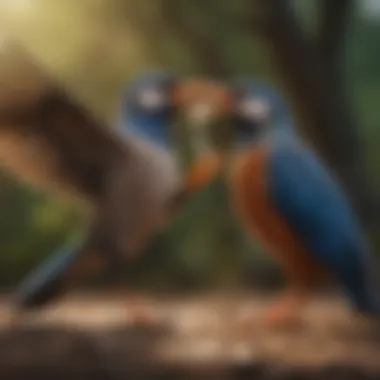
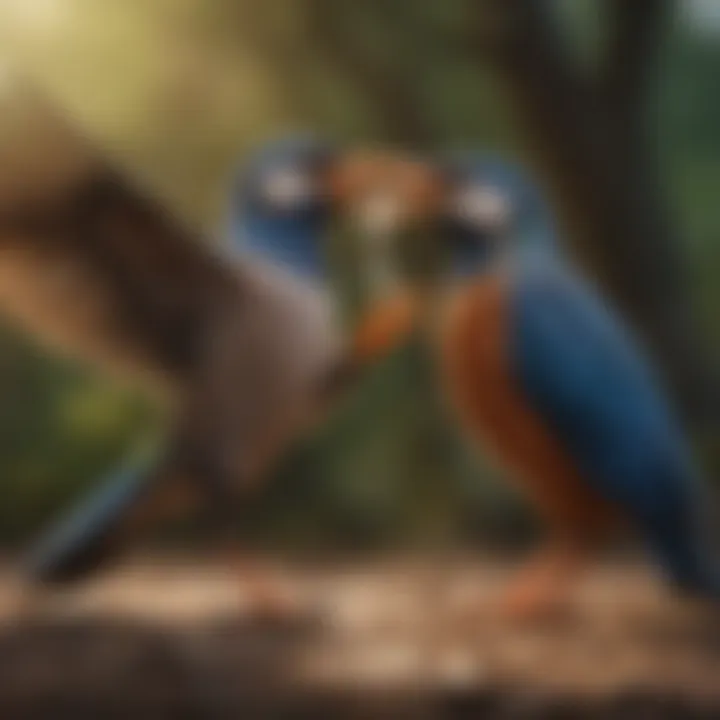
Communication Among Birds
Effective communication plays a crucial role in the lives of birds, shaping their social interactions, mating practices, and survival strategies. Understanding how birds communicate unveils the complexities of their world, offering insights that are essential not only for avian enthusiasts but also for pet owners looking to enhance their interactions with feathered companions.
Bird communication is vast and encompasses vocalizations, body language, and even interactions between different species. These methods allow birds to convey a variety of messages, whether it’s warning others of danger, attracting mates, or establishing territory. Recognizing the nuances of avian communication can help foster a deeper connection between humans and birds, aiding pet owners in recognizing their pet's needs and emotions.
"Birds speak a language that is, in many ways, as intricate as our own; they just do it with feathers and sounds."
Vocalization: Calls and Songs
Vocalization is perhaps the most prominent form of communication among birds. These sounds can be categorized into calls and songs, each serving distinct functions.
- Calls are typically shorter and often serve practical purposes, such as alerting the flock to potential threats or coordinating movements within a group.
- Songs, on the other hand, are more elaborate and are primarily associated with mating and territorial claims. For instance, the melodic notes of a male nightingale during the breeding season are a way to woo females and drive off rival males.
Different species have developed unique vocal patterns. The mockingbird, for example, has a remarkable ability to mimic other birds and sounds from their environment, which not only showcases their vocal prowess but also may play a role in confusing predators or rivals. Understanding these patterns can enhance the experience of birdwatching or caring for pet birds, as one can appreciate the context of various sounds they make.
Body Language and Visual Signals
Birds also communicate through visual cues, which include postures, displays, and feather positioning. Body language can be subtle but carries significant weight in social interactions. For example:
- Puffing up feathers can be a sign of dominance or confidence, often seen during disputes over territory.
- A bird that tilts its head or raises its crest may be signaling curiosity or interest.
- Wing displays are common during courtship; a male peacock fans out its stunning tail feathers to attract passing females, showcasing health and vitality.
Recognizing these signals can make a remarkable difference for pet owners, as they can learn to read their birds’ moods and respond appropriately, fostering a trusting environment.
Inter-species Communication
Interestingly, communication among birds isn’t limited just to their species. Birds often interact with other species, resulting in fascinating dynamics. For example, different species may engage in alarm calls that benefit multiple birds by warning them of predators. In some cases, species form mixed-species flocks, where they benefit from alertness and protection through collective vigilance.
Moreover, certain birds have developed symbiotic relationships with mammals. The oxpecker, for instance, communicates with large herbivores like rhinoceroses; it sets up camp on their backs, feasting on parasites while also alerting them to threats. This inter-species dialogue adds another layer of complexity to understanding bird behavior.
Feeding Behaviors of Birds
Feeding behaviors are critical to understanding avian life. The way birds acquire, process, and consume food not only influences their survival but also reflects adaptations that align with their environments. When discussing the spectrum of bird behaviors, feeding plays a linchpin role. It showcases their evolutionary strategies, social interactions, and even their cognitive capacities.
Foraging Techniques and Diet Variations
Birds exhibit a remarkable variety of foraging techniques, each tailored to their ecological niche. Some species, like the American Robin, are ground foragers, pecking meticulously at the soil to unearth worms or other invertebrates. Others, such as the hummingbird, have developed a specialized technique of hovering to access nectar hidden deep within flowers.
- Visual Foraging: Some birds rely heavily on sight. Raptors, like hawks and eagles, use their keen eyesight to spot prey from high above, then engage their powerful talons when swooping down for a catch.
- Acoustic Foraging: Meanwhile, some woodpeckers rely on sound to find insects hidden behind tree bark, tapping away to reveal their next meal.
Moreover, birds exhibit remarkable dietary variations. Some are generalists, consuming a wide range of food items, while others are specialists, honing in on very specific diets. For instance, the Koenig's Starling favors fruits and seeds, which influences its foraging locations and habits. Understanding these variations in foraging techniques allows bird enthusiasts to appreciate not only their diets but also the environments they thrive in.
Competition for Resources
Resource competition among birds can be fierce. As habitats shrink and human activities encroach upon wildlife, the struggle for access to food can intensify. Birds often establish pecking orders, utilizing aggressive displays and vocalizations to assert dominance.
- Intraspecific Competition: Within the same species, arguments could lead to conflicts over territories rich in resources. This is often seen in species like sparrows, where feeding territories can make or break the survival of individuals.
- Interspecific Competition: In contrast, competition between different species can lead to fascinating dynamics. For example, when Blue Jays and Robins occupy overlapping foraging areas, they may alter their behaviors, with one species feeding earlier at dawn to avoid conflict.
Understanding these competitive interactions not only illustrates the survival of the fittest concept but also gives insight into their behavioral adaptations.
Adaptations to Feeding Niches
Birds have evolved various adaptations that enable them to thrive in specific feeding niches. The great variety in beak shape is a clear example of this adaptability:
- Seed Cracker Beaks: Birds like the Finch possess strong, conical beaks for cracking hard seeds, thereby diminishing competition with softer-billed species.
- Long, Thin Beaks: Conversely, the long-billed Curlew has a specialized long beak designed for probing mudflats, allowing it to extract worms and crustaceans.
The habitats where birds feed also impact their physical adaptations. In urban areas, some species have learned to scavenge in parks and gardens, a shift from their natural behaviors. Such adaptability highlights the resilience of birds but also raises concerns about habitat loss and ecological balance.
"Birds are not just creatures of beauty but are also fine-tuned instruments of environmental metrics. The way they eat has profound implications on the ecosystems they inhabit."
By intricately understanding the feeding behaviors of birds, pet owners and bird lovers can better appreciate the habitats their feathered friends have adapted to, enhancing their responsibilities in nurturing and protecting them.
Mating Rituals and Reproductive Behavior
Mating rituals and reproductive behavior are critical elements in the life cycles of birds. These behaviors not only determine individual success but also contribute to the overall dynamics of avian populations. Understanding these practices allows us to appreciate the complexity of bird life and informs responsible pet ownership, enhancing the connection between humans and birds.
Birds engage in a variety of mating behaviors influenced by their species, habitat, and environmental conditions. Recognizing the intricacies of these behaviors can provide deep insights into their ecological roles and evolutionary strategies, benefiting both enthusiasts and researchers alike.
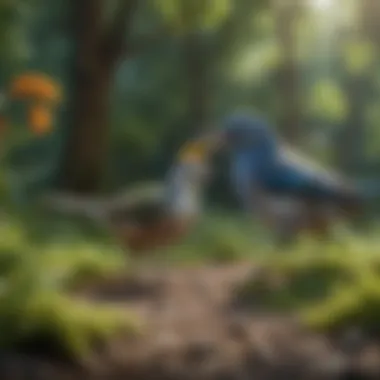
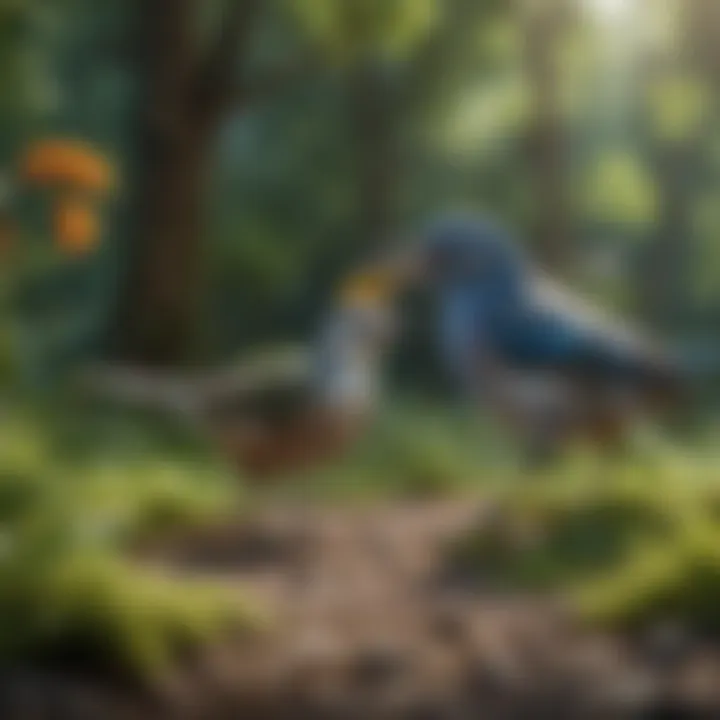
Courtship Behaviors
Courtship is often a dazzling display of avian prowess. Different species flaunt unique approaches to capture a mate's attention. For instance, some male birds, like the peacock, showcase their colorful feathers in elaborate displays while engaging in intricate dances. Other species might perform vocal showcases, like the songs of wood thrushes, drawing females closer with melodic tunes.
Additionally, behaviors such as gift-giving—where male birds offer food or shiny objects—serve as enticing gestures to impress potential mates. The ritual isn’t just about show; it’s highly strategic, highlighting the strongest genes. Thus, choosing a mate wisely affects the genetic health of future generations.
Territorial Displays and Defense
Establishing and defending territory plays a significant role in avian reproduction. Males often engage in vocalizations and physical displays to mark their territory. For example, the Northern Mockingbird has a reputation for singing loudly from a prominent perch, showcasing both strength and fitness to potential mates and rivals.
Territory provides essential resources such as nesting sites and food, making it a significant factor for attracting females. Aggression toward intruders and clear demarcation of area boundaries are vital for maintaining this space. These territorial behaviors not only contribute to successful mating but also ensure that the resulting young have a stable environment in which to thrive.
Nurturing and Parental Investment
After successful mating, the focus shifts to nurturing new life. Parental investment varies greatly among bird species. For instance, in many songbirds, both parents contribute to feeding the chicks, ensuring a higher survival rate. Conversely, species like the emu involve a singular effort, where the male incubates the eggs and guards the young post-hatching.
The nurturing phase is pivotal; it not only involves feeding but also teaching the young essential survival skills. Such parental care impacts the fledglings' ability to adapt and thrive within their environment. It's during this time that a strong bond forms between parents and young, setting the foundation for future learning and social structures.
"The richness of bird behaviors encompasses not just mating but the survival strategies that follow, revealing much about the delicate balance in ecosystems."
Influence of Environment on Bird Behavior
The study of how the environment shapes bird behavior is critical in understanding these creatures. Birds are incredibly adaptable, yet their actions are often closely tied to their surroundings. These interactions determine everything from feeding and breeding to migration and communication. By examining the influence of various environmental factors, we can gain insight into their lives and the challenges they face.
Seasonal Changes and Migration Patterns
Birds are finely tuned to seasonal changes. The shifting of the seasons affects their breeding cycles, feeding habits, and migratory routes. For instance, some species like the Arctic Tern fly thousands of miles to exploit abundant food resources during summer months. As day lengths change, hormonal shifts prompt birds to either migrate or prepare for breeding.
Moreover, geographical variations, such as altitude and latitude, can greatly influence migration patterns. The timing and routes can differ drastically between species. For instance, the Eastern Bluebird may start its journey earlier than its Western counterpart, dependent on environmental cues like temperature or food availability. Understanding these seasonal behaviors helps us comprehend the significance of environmental harmony for their survival.
"Migration is not merely instinct; it's an intricate dance with nature, driven by the landscape of changes."
Urbanization and Its Effects
The rapid growth of urban areas has had a profound effect on bird populations. Many species have shown remarkable resilience and adaptability. For example, the House Sparrow thrives in cities, making a living off human discarded food. However, urbanization can also lead to significant challenges.
Species such as the Baird's Sparrow or the Piping Plover struggle to find suitable habitats as natural landscapes are replaced with concrete jungles. Nesting sites are often compromised or destroyed, and the increased presence of human activity can lead to stress on bird populations and disruption of breeding cycles.
Birds like the American Robin have had to adjust their behaviors and nesting strategies. They tend to favor parks and green spaces within cities, adapting their feeding and nesting styles to survive in transformed environments.
Climate Change and Behavioral Adaptations
The effects of climate change on bird behavior cannot be understated. As global temperatures rise, the habitats that birds have relied on for generations are shifting or disappearing. Many species are being forced to venture into new territories in search of food and suitable breeding grounds.
Birds such as the Golden-crowned Kinglet are exhibiting changes in their migratory patterns, traveling further north to find cooler climes. Similarly, alterations in insect populations can affect bird feeding patterns. For instance, as caterpillar emergence dates shift due to warmer winters, birds face a mismatch in the availability of food at crucial times for feeding their young.
Furthermore, phenological mismatches present significant threats to bird populations that cannot adapt quickly. Species might find themselves unprepared for changing conditions, affecting their reproductive success and overall survival.
Understanding these adaptations is vital for conservation efforts. It emphasizes the need for sustainable practices that protect habitats and support resilience in bird populations amid rapidly changing climates.
Cognitive Abilities in Birds
Cognitive abilities in birds present a fascinating glimpse into the mental world of these avian creatures. Understanding how birds think and learn not only enriches our appreciation of them but also influences how we care for pet birds. Such cognitive skills are as vital to birds as their physical abilities, shaping their interactions with the environment, conspecifics, and humans. With numerous studies revealing the intellectual prowess of various avian species, it becomes essential for pet owners and enthusiasts to recognize the capacities and needs that come with these skills.
Problem-Solving Skills
Birds demonstrate impressive problem-solving skills, often adapting to challenges in their environments. For example, the New Caledonian crow exhibits remarkable ingenuity, using tools to access food. Scientists observed them crafting hooks from twigs to retrieve insects hidden in tree bark—quite the imaginative feat that highlights their intelligence. These birds, like many others, often face various problems, such as accessing hard-to-reach food sources or avoiding predators. In these scenarios, their ability to think on their feet and devise clever strategies can mean the difference between survival and becoming a meal.
Unresolved questions still linger about how widely these abilities exist across different bird species. The research shows that problem-solving varies not only among different species but also within populations. Birds that regularly encounter hurdles may develop sharper cognitive skills compared to those who have less environmental challenges. Consequently, days spent watching your pet bird can perhaps unveil layers to their character that often go unnoticed in captivity.
Social Learning and Culture
Social learning is another dimension of avian cognition that cannot be overlooked. Birds are not just solitary thinkers; they often observe one another and learn from those interactions. This capacity generates a culture of sorts, where learned behaviors are passed down through generations. The classic example can be seen in certain songbirds that change their songs based on the calls of their neighbors. Through social learning, young birds listen to adult songs and modify them—almost like jazz musicians adapting tunes.
The birds' ability to learn socially emphasizes the importance of interaction among them. In captivity, it becomes crucial to provide an environment that encourages social networking, allowing birds to mimic behaviors and learn from each other rather than rely solely on human interaction. This learning can enhance their quality of life and psychological well-being, making them more content companions.
Memory and Navigation
Memory plays a critical role in avian navigation and daily survival. Many birds are known for their exceptional memory skills, which help them locate food and navigate complex environments. For instance, the Clark's nutcracker, a bird residing in North America, can remember the locations of thousands of pine seeds buried across vast regions. Their capacity to recall where their stored food is hidden, sometimes months later, is nothing short of extraordinary.
Moreover, migratory birds rely on their memory and various cues from the environment to find their way during long-distance journeys. They use sun positioning, Earth's magnetic fields, and even landmarks to guide their flights. This navigation skill illustrates a need for a habitat that allows pet birds enough exercise and exploration opportunities to refine their natural instincts. A mentally stimulated bird is not just happier but also more attuned to its environment, reflecting an adaptable mind ready to engage with the world.
"Birds illustrate that cognitive abilities are not confined to humans or primates, but instead are found across the animal kingdom, showcasing diverse forms of intelligence in nature."
Understanding these cognitive abilities not only empowers pet owners to appreciate their birds’ innate skills but to provide an environment that nurtures their intelligence and adaptability. In the end, it's all about fostering a dynamic relationship that goes beyond simple caretaking—it's about recognizing the remarkable minds behind the feathers.







